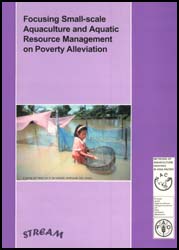
NETWORK OF AQUACULTURE CENTRES IN ASIA-PACIFIC
FOOD AND AGRICULTURE ORGANIZATION OF THE UNITED NATIONS
Bangkok, Thailand, February 12-14, 2002
ISBN: 974-7313-62-6
Participants at the expert consultation.
|
The designations employed and the presentation of the material in this document do not imply the expression of any opinion whatsoever on the part of the United Nations or the Food and Agriculture Organisation of the United Nations (FAO) or of the Network of Aquaculture Centres in Asia -Pacific (NACA) concerning the legal or constitutional status of any country, territory or sea area, or concerning the delimitation of frontiers or boundaries. |
NOTICE OF COPYRIGHT
All rights reserved. Reproduction and dissemination of material in this information product for educational or other non-commercial purposes are authorized without any prior written permission from the copyright holders provided the source is fully acknowledged. Reproduction of material in this information product for resale or other commercial purposes is prohibited without written permission of the copyright holders. Application for such permission should be addressed to the Director General, Network of Aquaculture Centres in Asia-Pacific (NACA), Surawasdi Building, Department of Fisheries, Kasetsart University Campus, Ladyao, Jatujak, Bangkok 10900, Thailand or the Aquaculture Officer, FAO Regional Office for Asia and the Pacific, Maliwan Mansion, Phra Athit Road, Bangkok 10200, Thailand.
© FAO & NACA 2002
By Richard Friend & Simon Funge-Smith
2.1 Focusing aquaculture on poverty alleviation
2.2 Understandings of poverty
2.3 Understanding the context of poor people's livelihoods
3.1 Who can aquaculture work with?
3.2 Collective Action
3.3 Providing Inputs
4. How to understand context - household livelihood strategies
5. Institutions and policy processes - understanding context
5.1 How can institutions be influenced to become poverty focused?
5.1.1. Working with institutions
5.1.2. Poor people's participation in policy and improved understandings of poverty and aquatic resources
5.1.3. Promoting Partnerships - government, NGOs and civil society
5.1.4. The role of donors